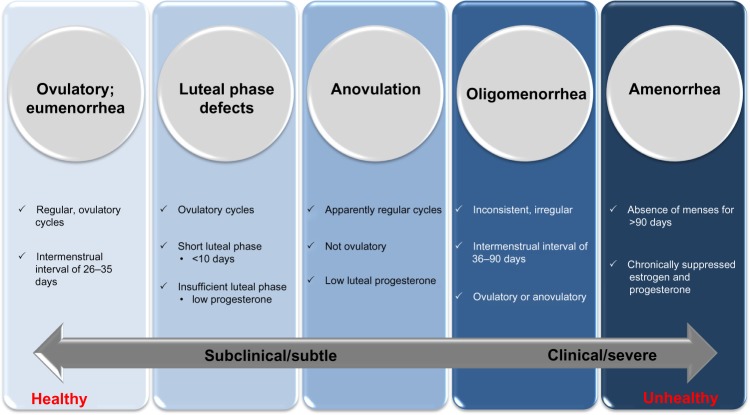Figure 2.
Continuum of menstrual cycle disturbances.
Notes: On the far left of the continuum is optimal menstrual health, which is characterized by regular ovulatory menstrual cycles that are 26–35 days in length. The subclinical/subtle menstrual cycle disturbances include luteal phase defects and anovulation, which represent the least severe disturbances. Menstrual cycles with a luteal phase defect are ovulatory but characterized by a short luteal phase and/or insufficient progesterone production during the luteal phase. Menstrual cycles in which ovulation does not occur and progesterone concentrations are notably low are called anovulatory cycles. It must be noted that cycles that have a luteal phase defect or are anovulatory frequently appear to be regular cycles due to intermenstrual intervals of normal length. The clinical/severe menstrual cycle disturbances include oligomenorrhea which is characterized by long, inconsistent intermenstrual intervals and amenorrhea, the most severe menstrual cycle disturbance, which is characterized by the absence of menses for at least 3 months.

